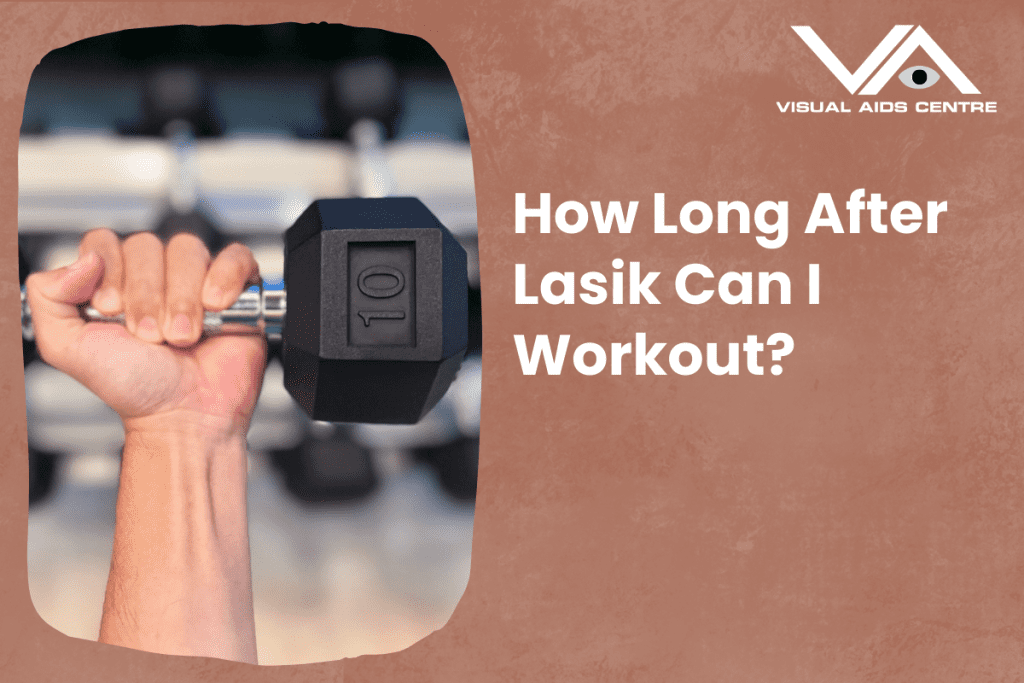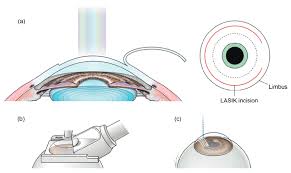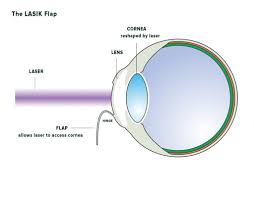Table of Contents
ToggleA popular refractive eye procedure called LASIK and its full form is Laser-Assisted in Situ Keratomileusis, which utilizes a laser to reshape the eye’s cornea in order to treat vision issues. A tiny corneal flap is generated and then adjusted throughout the surgery to increase light focus on the retina. So, How Long After Lasik Can I Workout?
Nearsightedness, farsightedness, and astigmatism are all treated by LASIK. After a few days of rest, recovery usually entails a gradual restart of daily activities. The technique is popular for people looking for sharper eyesight because of its speedy results and less dependence on glasses or contacts.

How long after Lasik can I workout?
LASIK involves utilizing a laser to reshape the cornea, the transparent front surface of the eye. For this treatment, a little corneal flap must be created, lifted, and then shaped before being put back in place. Time is required for the corneal flap to recover and correctly attach to the underlying tissue. The early healing phase following LASIK is essential for reducing the risk of problems and delivering the best possible outcomes.
Patients are frequently instructed to relax and refrain from excessive physical activity during the first several days following LASIK treatment. It’s critical to avoid any unintentional injury to the eyes throughout this period of healing and reattachment for the corneal flap. For optimum recovery, patients should also follow the recommended eye drop routine.
Following LASIK surgery, the recuperation process frequently breaks down into phases, each with its own set of recommendations for physical activity:
Days 1-3 in the immediate post-operative period :
It’s crucial to stay away from engaging in any activity that might result in sweating, dirt or dust particles getting into the eyes during this time. Normal walking is okay, but activities that are more challenging must be postponed.
Initial Healing Phase (Days 4-7) :
The majority of patients start to see an improvement in vision during the initial healing phase (days four through seven). Activities that put a lot of pressure on the body or the eyes should still be avoided.
The phase of Early Recovery (Weeks 2-4) :
By this time, the corneal flap ought to be securely attached, lowering the possibility that physical activity may cause it to come loose. You could think about doing light cardio workouts like stationary riding or brisk walking, but consultation from a skilled surgeon is required.
Intermediate Recovery Phase (Weeks 4-6) :
In collaboration with your eye doctor, you might be allowed to progressively begin more intensive workouts during the intermediate recovery phase (Weeks 4-6). To prevent actions that can result in ocular injuries, measures should still be followed.
Full Recovery Phase (Weeks 6 and beyond) :
Patients can often resume their usual routines of exercise throughout the full recovery phase (weeks six and beyond). To avoid unintentional eye injuries, it’s best to use protective eyewear like sports goggles.
Timeline for Recovery Influencing Factors
The time frame for starting exercise again following LASIK surgery might vary depending on a number of factors :
Individual Healing Rate :
Everybody heals their eyes at a different rate.
Exercise Style :
Low-impact exercises like yoga and walking are often safer to restart sooner than high-impact workouts like weightlifting or running.
Prescription severity :
The length of time it takes for you to recover depends on how severe your original visual issues were. Longer healing times may be required by stronger medicines.
Regular follow-up visits with your eye surgeon are essential for monitoring your recovery and obtaining personalized guidance on when to start exercising again.
Overall Health :
Your ability to recover after surgery and resume physical activity may be impacted by your overall health as well as any basic clinical disorders.
Exercise and Eye Health :
Best Practises and Cautionary Measures
Safety First :
Protect our eyes while exercising. It’s critical to put your eyes’ safety first as you move through the healing stages and resume exercising regularly. Here are some recommendations, let’s check!
What are the best practices and safety measures?
Wear Protective Eyewear :
Wearing a protective eyewear, such as sports goggles or wrap sunglasses, can significantly lower the risk of eye injuries, particularly during high-impact sports or activities that could expose your eyes to possible threats.
Avoid Contact Sports Initially :
First, stay away from contact sports like basketball, soccer, and martial arts since they might increase your chance of suffering an eye injury. These should be avoided in the initial stages of restoration and only resumed with your eye surgeon’s approval.
Hygiene and Cleanliness :
Be careful about upholding excellent hygiene if you participate in activities that might result in sweating or dirt getting in contact with your eyes. Make sure to fully wash your hands before touching your eyes and avoid wiping your face with unwashed hands.
Keep Hydrated :
Staying properly hydrated is crucial for good health in general, including eye health. The layer of tears on the surface of the eyes is maintained by proper hydration, which lessens dryness and discomfort.
Take Note of Your Body:
During and after workouts, pay attention to any pain, dryness, or changes in vision. Take a pause and talk to your eye surgeon if you encounter any of these signs.
Gradual Intensity Increase :
When starting a fitness routine again, start with low-intensity activities and build up to more strenuous ones over time. This reduces the possibility of strain and enables your body, particularly your eyes, to adjust.
Getting advice from an eye surgeon :
It’s crucial to stay in touch with your eye surgeon during the recovery period. They are the greatest resource for getting detailed advice on when you may restart your particular workout activities safely.
The sort of workouts you want to perform, your own healing process, and any potential threats to your eyes will all be taken into account by your surgeon.
Conclusion
In summary to “How Long After Lasik Can I Workout?”, returning to exercise after LASIK surgery necessitates a careful strategy that puts your eye health and safety first. A quick recovery depends on following the suggested phases of recovery, following your eye surgeon’s instructions, and taking into account personal characteristics.
Although it is reasonable to want to resume your workout routine, it is important to give your eyes enough time to heal if you want the greatest results from your LASIK procedure.













